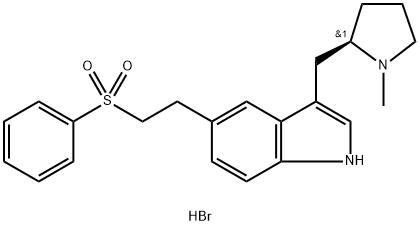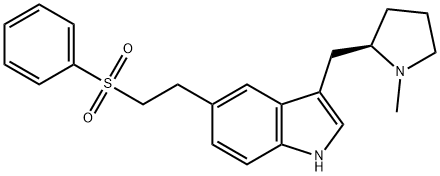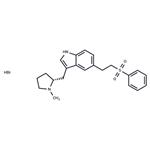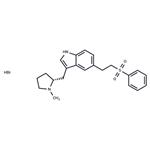
Eletriptan hydrobromide
- Product NameEletriptan hydrobromide
- CAS177834-92-3
- CBNumberCB3854925
- MFC22H27BrN2O2S
- MW463.43
- EINECS639-688-8
- MDL NumberMFCD18642857
- MOL File177834-92-3.mol
- MSDS FileSDS
Chemical Properties
| Melting point | 169-171?C |
| storage temp. | Keep in dark place,Inert atmosphere,Store in freezer, under -20°C |
| solubility | DMSO: >10mg/mL |
| form | powder |
| color | off-white to light tan |
| InChIKey | PWVXXGRKLHYWKM-IBGZPJMESA-N |
| FDA UNII | M41W832TA3 |
| UNSPSC Code | 41116107 |
| NACRES | NA.77 |
Safety
| Symbol(GHS) |
 
|
| Signal word | Danger |
| Hazard statements | H302-H318-H412 |
| Precautionary statements | P264-P270-P273-P280-P301+P312-P305+P351+P338 |
| Hazard Codes | Xi |
| Risk Statements | 36 |
| Safety Statements | 26 |
| WGK Germany | 3 |
| HS Code | 29339900 |



